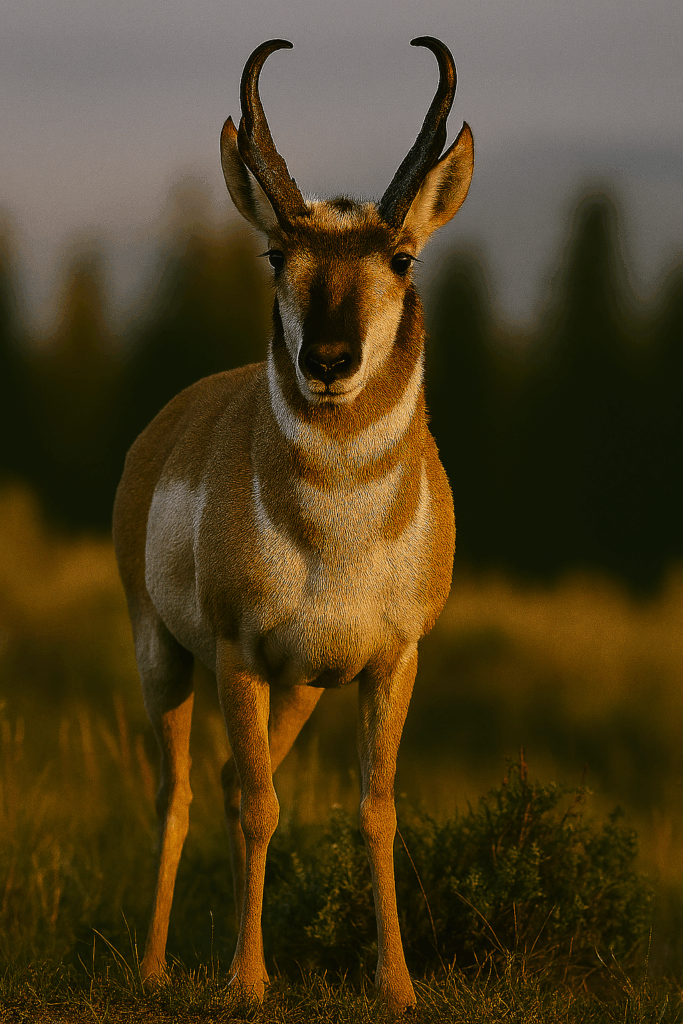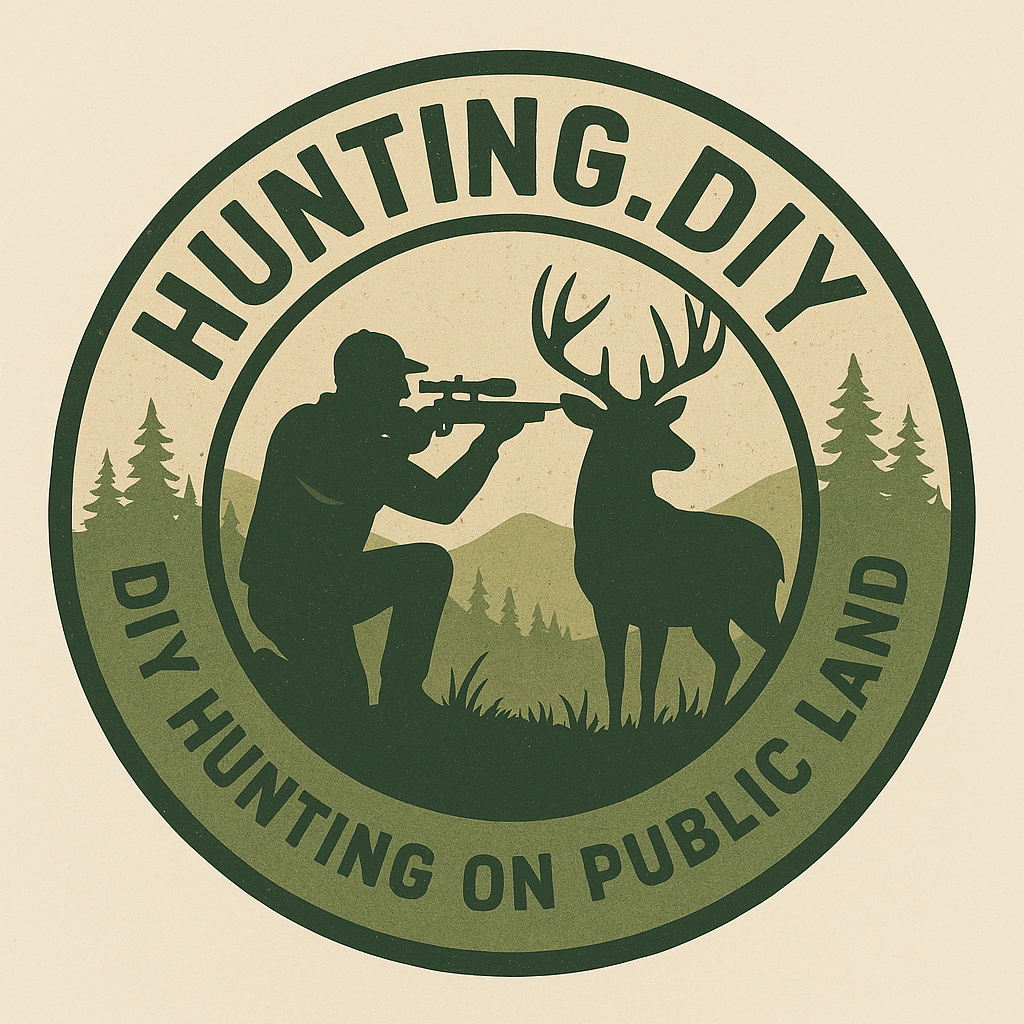Pronghorn DIY Hunting Guide & Tips (2025)
Pronghorn hunting guide: On public land is a test of patience, speed, and savvy—you’re solo, no guides, and you’ll snag speed’s fastest land mammal with pure skill. Lock in on open plains and sagebrush flats; outthink these antelope with grit and ground smarts.

Species Classification
Pronghorn (Antilocapra americana) aren’t true antelope—they’re the sole survivors of the Antilocapridae family, a North American relic. While European antelope are bovids, pronghorns diverged into their own group after the last Ice Age. Bucks sport that signature black pronged horn, while does have shorter, thinner ones.
Think of pronghorns as a unique North American icon—their lineage predates many modern ungulates. Calves stick with their mothers until their first autumn migration, learning flight over fight in sagebrush battlegrounds. Bucks establish harems during summer rut, chasing does across miles of open country.
Physical Description
Pronghorns range 3 to 3.5 feet at the shoulder, weighing 90 to 140 pounds—slim, built for speed. Their tan coats sport bold white patches on the rump, belly, and throat, with darker masks decorating bucks’ faces. The key feature: horns with a forward-facing prong on each blade, shedding the sheath annually.
Muscle-packed legs and lightweight frames let them sustain 50 mph bursts and cruise 35 mph—no big-game species matches their endurance speed. Their large eyes sit high on the skull, granting near 360-degree vision to spot predators miles off in flat terrain.
Distribution and Habitat
Pronghorns roam western grasslands, sagebrush steppes, and desert flats across 11 U.S. states and parts of Mexico and Canada. Strongholds include Wyoming’s Red Desert, Montana’s plains, and Arizona’s Sonoran Basin. Crucial habitat features low shrub cover and open visibility—think endless sea of brush and grass.
They rely on wide-ranging migration corridors to follow seasonal forage and escape deep snows. Public land Refuge Systems and BLM allotments often overlap prime pronghorn zones—hunting here demands zoning savvy and route planning across vast expanses.
Season Dates and Regulations
Pronghorn seasons open mid-August through September in many western states, aligning with pre-rut movements. Tag allocations vary by unit; most states use draw lotteries with limited nonresident opportunities. Some regions split doe and buck seasons; antler-point restrictions ensure trophy management.
Know application deadlines—they close months before opener. Regulations tie you to tagged hunt areas and specified weapon types; busting boundaries means tag loss and fines. Study every detail in your state’s big game guide to avoid rookie mistakes.
Best Hunting States/Regions
Wyoming’s Powder River Basin and Red Desert units hold robust herds and public access. Montana’s eastern plains near the Missouri River attract ambitious solo hunters with high tag success. Idaho’s Owyhee Plateau offers remote expanses, while New Mexico’s prairie units deliver less crowding for DIY seekers.
Arizona chunks like Unit 14 feature unique desert pronghorn, but scorching temps demand early starts and water caching. Choose regions that balance tag availability, terrain comfort, and logistical access—don’t force yourself into a 50-mile hike without water stashes.
Hunting Equipment: Gun and Ammo
A flat-shooting .243 Winchester or 6.5 Creedmoor slugs is ideal—pronghorns don’t require elephant calibers but demand precision at 300 yards or more. Push 95- to 130-grain bullets designed for aerodynamic flight. A 3–12×44 scope gives clarity on pronghorns’ keen vision zones.
Bowhunters should shoulder 60–70-pound draw bows with 2-blade or expandable broadheads. Lightweight gear rules—every ounce in your pack counts when crossing plains at dawn for the stalk.
Hunting Methods and Techniques
Spot-and-stalk is king: glass from fences, hills, or waterholes at first light. Map out wind directions to slip undetected across wide-open terrain. Crawl into sagebrush drifts for cover; pronghorns smell poorly but spot movement instantly.
Decoying works during rut: doe bleats and buck snort-wheezes draw territorial bucks. Limit calls to short bursts; overcalling spooks these wary creatures. Time your approach post-rut chase—bucks are bleary-eyed and less vigilant as October nears.
Licenses and Tags
Enter multiple state draws to cast a wide net—preference points lower odds over years. Nonresidents face higher fees and point costs, so weigh odds versus cost. Once drawn, confirm tag type (buck-only or any-antlered) and authorized weapon class.
Carry digital and paper copies of your tag and draw letter. Tag validation processes vary: some require on-site outfitter offices or automated stations—pin these details before departure.
Diet and Feeding
Pronghorns graze on forbs, grasses, and sagebrush, shifting diets by season. Spring and early summer bring sweet greens; fall pushes them to browse dry shrubs. Watch for bedding clusters near prime forage zones at midday.
Water is vital in arid landscapes; pronghorns drink daily if temps soar past 80°F. Locate stock tanks and springs on your topo maps—stake out ambush positions nearby for a surefire shot.
Reproduction and Life Cycle
Rut peaks in late September: dominant bucks herd females, displaying raised hair, foot-stomps, and horn clashing. Does give birth to 1–3 fawns in mid-June, hidden in brush while mothers feed. Fawns have rapid growth spurts—by fall, they trek long migration routes with the herd.
Predation from coyotes and eagles keeps fawn survival low; natural selection culls slow movers early. Adult mortality centers on winters with deep snow, limiting forage access and separating herds.
Population Status
Pronghorn numbers rebounded from historic lows; robust herds in Wyoming, Montana, and South Dakota maintain stable populations. Habitat fragmentation and fences threat migrations, splitting herds and reducing gene flow. Conservation groups fight for wildlife crossings to sustain corridors.
Before committing to a unit, check state wildlife survey densities and trend reports—priority goes to zones with healthy buck:doe ratios and minimal harvest pressure.
Meat Quality and Processing
Pronghorn meat tastes lean and sweet—almost like grass-fed beef. Field dress immediately to cool meat in desert air—pack out quarters or gutless cape to lighten loads. Trim brisket and ribs for jerky—steaks cook fast and stay tender when not overdone.
Vacuum seal cuts and freeze quickly to preserve moisture. No game bags needed if temps stay below 50°F; summer hunts might require ice packs during haul-out.
Safety Considerations
Long glassing sessions under sun demand UV protection—wide-brim hats and sunscreen are your friends. Dehydration kills; always carry more water than you think. Watch for lightning storms on plains—pronghorn seek higher ground near ridges, where you don’t want to be.
The open country offers little cover from wind and cold; layer up for afternoon blasts. Prairie rattlesnakes may lurk under rocks—stomp before stepping in brush.
Tracks and Sign
Pronghorn tracks are smaller than deer—two oval capsules with slight pointed fronts, measuring about 2 to 2.5 inches long. Their gait leaves paired prints far apart, showing bounding steps. Bedding sites are shallow indentations in soft soil or grass patches.
Look for fawn scrapes: small, shallow depressions with trampled grass near doe bedding areas. Droppings are pellet-like, smaller than deer, and cluster around feeding zones.
Similar Species
Mule deer bucks have branching antlers; pronghorn horns are unbranched sheaths on a bony core with one prong. White-tailed deer lack horns entirely. Antelope and mule deer tracks also show different spacing—deer steps are shorter, pronghorn bounds carry you farther.
Spot the white rump patch and black facial mask on bucks to confirm pronghorn. If you see a broad forked or branched rack, you’re eyeballing the wrong species—lay off the trigger.
